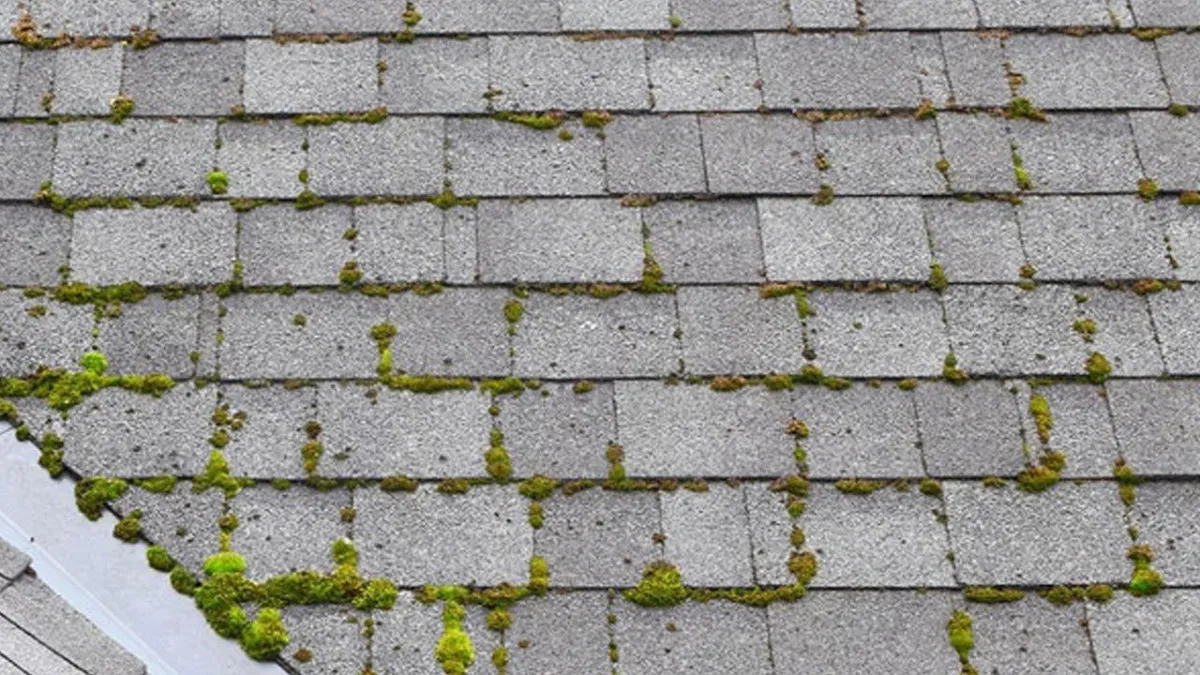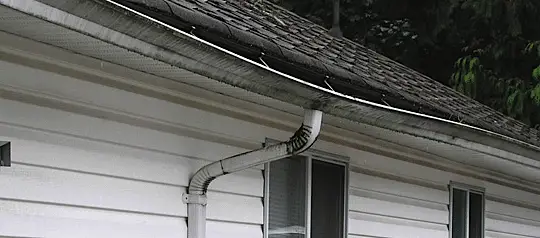
5 Signs That Your Roof Needs Cleaning to Avoid Costly Repairs
A single missed cleaning can turn minor roof discoloration into a full-blown leak, costing homeowners $1,100 on average to repair. In this guide, you’ll discover five clear warning signs—along with expert insights on algae damage, moss removal, gutter health, shingle deterioration, debris buildup, cost comparisons, scheduling, professional methods, and gutter-cleaning best practices—that help you protect your Vancouver home’s investment through timely roof cleaning.
What Are the 5 Common Signs Your Roof Needs Cleaning?
Five key indicators—black streaks, moss and lichen growth, overflowing or sagging gutters, shingle discoloration and granule loss, and visible debris in valleys—signal when a roof requires cleaning to prevent premature deterioration.
Before exploring each sign in detail, here is a quick list:
Black Streaks and Algae
Moss and Lichen Growth
Overflowing or Sagging Gutters
Shingle Discoloration and Granule Loss
Visible Debris and Clogged Valleys
Each of these issues tarnishes curb appeal curb appeal and accelerates structural damage if left unchecked. Understanding how each develops leads us directly into the mechanics of algae invasion. Homes in Vancouver, Burnaby, Surrey, and surrouding areas are often subject to all these Issues.
How Do Black Streaks and Algae Indicate Roof Damage?
Black streaks form when Gloeocapsa magma, a blue-green algae, colonizes shingle surfaces and consumes the limestone filler that binds granules. This process accelerates granule erosion, reduces weather resistance, and creates moisture pockets that lead to shingle breakdown. Homeowners often spot these streaks on north-facing slopes or shaded areas.
Why Is Moss and Lichen Growth a Warning Sign?
Moss and lichen are spongelike organisms that retain moisture against the shingle surface, lifting edges, and creating micro-gaps where water may infiltrate the home. In shaded, damp conditions, these patches can spread rapidly, causing underlayment rot and promoting wood decay. Removing moss before it embeds into roofing materials is essential to maintain structural integrity and prevent costly underlayment repairs. With moisture traps under control, it’s important to inspect gutter function next.
What Does Overflowing or Sagging Gutters Reveal About Roof Health?
Sagging or overflowing gutters indicate that water runoff isn’t being channeled away from fascia and roof edges properly. When gutters are blocked by organic matter, water pools at the roofline, leading to fascia rot, ice damming in winter, and eventual leaks into attic spaces.

How Does Shingle Discoloration and Granule Loss Signal Roof Deterioration?
Fading, curling, or granular bare spots on asphalt shingles reveal UV degradation, age-related brittleness, or damage from chemical cleaners. Granule loss compromises UV reflection and water shedding, causing shingles to crack under thermal stress.
Spotting these signs early allows for selective shingle replacement rather than full-roof restoration.
Why Is Visible Debris and Clogged Valleys a Roof Cleaning Alert?
Leaves, twigs, and pine needles accumulate in roof valleys and around flashing, trapping moisture that leads to rot and rust. These organic traps prevent rapid water drainage, creating stagnant pools that damage roofing felt and metal components.
Clearing debris ensures proper runoff and prolongs the lifespan of both shingles and valleys.
How Does Algae Damage Your Roof and What Causes Black Streaks?
Algae damage occurs when the microorganism Gloeocapsa magma feeds on limestone fillers in asphalt shingles, disrupting protective granules and reducing shingle lifespan. Understanding this entity’s behavior helps homeowners address root causes rather than surface symptoms.
What Is Gloeocapsa magma and How Does It Affect Shingles?
Gloeocapsa magma is a cyanobacterium that thrives on the limestone particles in shingle asphalt, metabolizing mineral content and producing dark pigments. This colonization leads to uneven granule loss, exposing asphalt underlayment to UV and moisture damage. Without granules, shingles warp under heat and crack during freeze-thaw cycles, shortening a roof's lifespan by years.
Algae and Shingle Degradation
Research indicates that the blue-green algae Gloeocapsa magma actively consumes the limestone filler in asphalt shingles, leading to granule erosion and reduced weather resistance. This process can cause the shingles to break down more quickly, leading to the need for roof repairs.
Jones, A., Roofing Materials and Algae Growth (2022)
Why Is Moss Removal Critical to Prevent Roof Damage?
Moss and lichen behave like moisture sponges on roofing surfaces, creating persistent wet zones that accelerate rot and structural decay. Removing these organisms preserves shingle adhesion and prevents underlayment compromise.

How Does Moss Retain Moisture and Lift Shingles?
The fibrous structure of moss holds water against the shingle, allowing moisture to seep under edges and push shingles upward. This lifting action breaks the sealant strip and exposes the roofing felt below.
What Are the Risks of Lichen Growth on Roof Surfaces?
Lichens produce acidic byproducts that chemically etch shingle granules, eroding protective coatings and creating micro-channels for water intrusion and freeze-thaw damage.
How Can Moss Lead to Wood Rot and Structural Issues?
When moss traps moisture over wood-framed eaves or roof decking, it creates the ideal environment for wood-destroying fungi. Over time, this rot undermines fasteners and can lead to sagging rafters.
What Are the Risks of Clogged or Damaged Gutters to Your Roof?
Clogged or damaged gutters disrupt water flow from the roof to downspouts, causing overflow that erodes fascia boards and saturates roof edges. Maintaining clear gutters extends both roof and foundation life.
How Do Sagging or Overflowing Gutters Cause Water Damage?
When gutters sag or back up, water spills onto fascia, soaking wood and causing rot within weeks. In freezing conditions, ice dams form and force water under roof materials, leading to interior leaks.
What Are Signs That Your Gutters Need Immediate Attention?
Look for sagging sections, weeds sprouting in gutter troughs, and staining on siding directly under the gutter line. These signs confirm that water is not draining properly and is contacting building components.
How Can Gutter Maintenance Prevent Costly Roof Repairs?
Regular gutter clearing and realignment ensure that roof runoff is channeled away from vulnerable roof edges. Scheduled maintenance prevents water pooling that would otherwise lead to shingle and wood damage.
How Can You Identify Shingle Damage and Discoloration Early?
Early detection of shingle anomalies—curling, cracking, missing pieces, and color changes—allows for targeted repairs before leaks and rot require full-roof replacement.
What Causes Shingle Curling, Cracking, and Missing Pieces?
Age, UV degradation, poor attic ventilation, and impact damage from debris all contribute to shingle deformities. Proper attic airflow and gentle cleaning methods reduce stress on aging shingles.
How Does Discoloration Affect Roof Energy Efficiency?
Faded shingles absorb more heat, raising attic temperatures and increasing cooling costs. Retaining reflective granules maintains the roof’s capacity to deflect solar radiation.
How Does Debris Accumulation and Clogged Valleys Impact Roof Health?
Accumulated debris creates moisture-retaining pockets that accelerate rot and corrode metal flashing. Clearing roof valleys is vital for preventing localized decay and preserving overall roof performance.
What Types of Debris Commonly Accumulate on Roofs?
Leaves, pine needles, twigs, and seed pods collect in roof valleys and around vents, where they form dense mats that trap water.
How Does Debris Trap Moisture and Promote Rot?
Organic mats hold water against the roofing membrane, allowing wood deck and metal components to deteriorate through constant wetting and drying cycles.
What Are Effective Cleaning Practices to Remove Debris Safely?
Use a soft-bristle broom or low-pressure blower to dislodge debris, then rinse valleys with a garden hose. Avoid pressure washing which can strip granules and damage shingles.
Why Is Preventative Roof Cleaning More Cost-Effective Than Repairs?
Proactive cleaning at $300–$1,050 per average roof prevents repair bills that average $1,128 or more, delivering significant savings and extending roof service life.

Regular maintenance also preserves manufacturer warranties and reduces energy bills by maintaining proper reflective properties. Failing to maintain a clean roof may result in structural damage, and insurance cancellations.
How Often Should You Schedule Roof Cleaning In Vancouver?
Most roofs benefit from a cleaning cycle every 1–2 years, with more frequent attention in humid or heavily treed environments. A proactive schedule prevents buildup and extends roof lifespan. In damp, shaded climates (such as Vancouver, Surrey and Burnaby), annual cleaning is ideal; in sunnier, windy regions, cleaning every 18–24 months typically suffices to manage algae and debris.
What Are the Signs That Indicate Immediate Cleaning Is Needed?
Visible black streaks, moss patches exceeding 3 inches in diameter, gutter overflow during light rain, or granular runoff in downspouts all demand prompt intervention.
How Can Professional Roof Cleaning Methods Protect Your Roof?
Soft washing and eco-friendly solutions remove contaminants safely, preserving shingle coatings and preventing water intrusion without the risks of high-pressure cleaning.
What Is Soft Washing and Why Is It Recommended?
Soft washing uses low-pressure water combined with biodegradable detergents to kill algae, moss, and mold at the root level without stripping shingle granules or damaging seals.
How Does Professional Cleaning Prevent Damage Compared to DIY?
Our trained technicians use roof-safe equipment, fall protection, and manufacturer-approved solutions to avoid shingle abrasion, chemical overuse, and warranty voiding that often result from DIY attempts.
What Eco-Friendly Solutions Are Available for Roof Cleaning?
Fortified sodium percarbonate and phosphate-free surfactants break down organic matter on contact and rinse away harmlessly, leaving no lasting chemical residue on landscaping or roofing materials.
How Often Should Gutters Be Cleaned for Optimal Roof Protection?
Gutters should be cleared at least twice a year—in spring after pollen and seed drop, and in autumn after leaf fall—to ensure year-round runoff efficiency.
Paying attention to these five roof-cleaning warning signs and related maintenance practices helps you protect and preserve your home. By understanding algae and moss threats, managing gutters, monitoring shingle health, clearing debris, and comparing cleaning costs to repair expenses, you’ll avoid expensive fixes and keep your roof performing at peak efficiency. If you would like help assessing the condition of your roof, feel free to contact us through text email or phone.
